UPDATE: Thomas conducted this interview over Skype before he boarded a plane for New York City and before this interactive street photography project officially launched. The “Thomas does NYC” project is currently underway and is on Day 3, putting participants in the seat of creative director for his street photography. Every day for six consecutive days, fans of the project page on Facebook can submit ideas and vote for what Thomas Bönig should capture in New York City. The winning idea will receive a thank you gift. The result of the first “Shot of the Day” is now live and Thomas is currently roaming New York City to capture Day 2’s “Shot of the Day”. Vote and submit your ideas for Day 3 here.
The unlikely tale of a successful commercial photographer from Germany who takes his new Leica M9 on its maiden voyage to Morocco, records a compelling documentary portfolio of the local culture, and goes on to create one of the most original photojournalistic photography projects. Yes, he’ll be shooting the pictures himself with his M9 and trusty 35mm f/2 Summicron-M ASPH lens. That scraping sound you hear is probably Henri Cartier-Bresson turning over in his grave.
Documenting Morocco
Q: What was your objective in documenting Morocco and what was your itinerary? Was this a self-assignment?
A: Objective is perhaps the wrong word–it was just a holiday trip, and the first trip I took with my new Leica M9. I had purchased it only 2-3 weeks before we got there and I had only just started familiarizing myself with the camera We did a two-week round-trip; we flew to Casablanca, stayed there for 5-6 days, then went to Marrakesh, then on to Essouira, and then flew back. I found Casablanca pretty industrial, so most of the pictures in the Morocco portfolio were taken in Marrakesh and Essouira.
Q: Your pictures are thoughtful and well executed. Are you a professional?
A: Yes, I am a professional photographer. I did the classical three-year apprenticeship as a commercial photographer– a lot of product shots. I’m personally more interested in people, portrait and sports.
Q: These images have a photojournalistic/documentary feel to them. Is that representative of your style or do you think the Leica M9 influenced your shooting style?
A: The funny thing is, I did some travel photography before with a Nikon SLR and other cameras, but the pictures that I took with the M9 turned out completely different than anything I had done before and can’t explain how it happened. Bit one thing is for sure— as soon as I take the M9 out, my point of view changes.
Q: How do you think the experience differs qualitatively?
A: The first point, and it’s been mentioned so often, is that when you shoot with a ‘big kahuna’ DSLR you get noticed by people around you; you get noticed because of the size, and the clicker-clatter of the shutter— it simply draws attention. Even the camera strap calls attention to you with its big bright logo. People notice that. When these things happen, the whole dynamic changes.
Q: Do you see this as an existential difference?
A: Absolutely, it changes your point of view. When you’re shooting with the M9 you start noticing little actions and little things that happen, it might be a sudden change of light, it might be someone crossing the street right in front of your camera. What I really like is that you don’t have to bring it up to your eye. You don’t have to do metering, set the aperture— you just hit the trigger. It’s perfect for revealing the little aspects, the little things that happen in life and to turn them into something special. People don’t really seem to notice and that makes all the difference.
Q: One picture that draws our attention is kind of enigmatic— it’s a boy, you don’t see his full face, with a partial shadow behind him, walking forward toward an amorphous blackness. It’s very striking, and seems to suggest tension, anxiety and the uncontrollable aspects of life that confront us, but what’s actually going on here?
A: It was taken in Marrakesh close to one of the King’s Gardens, which is enclosed by big walls. A lot of people have commented on this shot, so I guess it has generated some interest and people seem to feel something when they look at it. This young guy was walking down one side of the street, probably trying to decide whether to move to the other side of the street to avoid an oncoming vehicle that isn’t visible in the frame. It’s one of those little moments— I loved the light, and as I lifted the camera to my eye I got exactly the moment that he was deciding whether to cross the street or not. I’m not sure if he switched, because I looked at the display of the camera to see what I got. The simple graphic composition, the intensity of the Moroccan light and the uncertain expression on the boy’s face help create an aura of mystery I guess. Anyway I just loved the moment.
Q: What lens did you use to take this picture and which M lens or lenses do you favor generally?
A: All the photos in Morocco were taken with a 35mm f/2 Summicron ASPH– the older version ASPH, not yet 6 bit coded. I love this lens— I absolutely love it!
Q: There’s a certain random quality to the moment too and another images that has a similar feeling has a cat in the middle framed by sailors or fishermen. Can you tell us something about it?
A: The picture was taken in Essouira at a shipyard, a harbor area where fishermen bring their catch. I went there really early in the morning, about 6AM, to see what was happening. The fishermen were unloading their catches while people working on the ships went on their break. The image includes three fishermen returning from sea. The guy on the right side is carrying a fish on the hook and carrying it home. The cat was just strolling and sniffing around. She kept walking into the frame and that’s when I raised the camera to my eye. I was waiting for the decisive moment and that happened when she raised her back. I’m not sure if the cat was scared or stretching, but I pulled the trigger at that instant. In retrospect it’s actually a classical moment— a fish in the picture, one guy resting on the net and then you have the cat— it’s almost a cliché.
Q: It tells a story and conveys a strong since of place. Do you agree?
A: Yes, but it’s also the amazing light and I love contrasts. The M9 is a camera that needs to be challenged with the lighting and it performs flawlessly.
Q: Why do you rely on the 35mm Summicron for so much of your work?
A: To tell the truth, it’s the only Leica M lens I presently own, but it’s also the most flexible lens if you want to start with a lens that can do practically everything. I’d love to acquire a 50mm for portrait shots. Anything wider would be too wide angle— maybe for architecture or journalistic moments— but I found the 35mm to be the perfect balance for a wide range of shots. I still can do some architecture and classical landscapes, as well as travel and street photography.
Q: All your Morocco images are presented in black-and-white. Have you considered acquiring a Leica Monochrom?
A: Before I purchased the M9 I was thinking about buying the M7 or 6 to shoot black-and-white film. But I thought to myself, ‘You should try to go with the future.’ I love film, but I wanted a camera that is flexible and has amazing image quality and offers me the opportunity to shoot directly in B&W. Of course other cameras do it but the way they do the B&W conversion differs and I love the look of the M9. I sold my complete DSLR kit, leased another camera from another brand that we’re not going to mention here and then I went for the M9. I would buy a Monochrom if my finances allowed it, but I’m completely blown away by the M9 and at the moment, don’t need it. I’d like to invest in the 50mm first.
Q: We’re looking at another picture, a picture of a line of young boys— two of them looking straight at the camera and three with their heads down, with mountains in the background. It reminds us of a National Geographic picture from the 30’s or 40’s. It’s a very nice composition and it makes you smile. How did you come to take it?
A: We did a side trip from Marrakesh into the Atlas Mountains and I must say I got on our driver’s nerves because I wanted to stop and take pictures every few hundred yards! This is a picture of Berber boys, the kids of the people living in the mountains. It was in the morning so they were probably on their way to school. I just got a glimpse of as they were looking down the cliff at the small valley below. The river stopped and I went over to say hello. English isn’t that common, so it was hard to have a conversation and people tend not to talk to strangers. Every kid knows how to say “give me money” in English, but I asked if I could take their photo.
I kind of tricked them to get them to look at me. I pressed the trigger and at the moment when they were coming up to fact the camera I took another shot. The kid hiding his fact on the left side has the faintest hint of a smile. They’re pretty shy people.
Q: Can you tell us something about your beautifully framed photograph of what looks like a traditional market with a seller standing in the center next to a naked light bulb?
A: You’re right. I shot it at a famous market that’s set up early every day of the week to sell foods of all kinds and closes down at 11:30 PM. The guy is actually selling snails and the people seem to like them. The place was fully packed— not one tourist. On the little sign that he has near his hand, it says Number 1, but farther down, in much smaller numbers is written 135. They try to cheat a little sometimes and I think he’s trying to create the impression that he’s the number one seller of snails.
I love the way the M9 captures the light. There isn’t much light– only the bulbs in the roof. The silhouettes in the foreground and notice how the light is crawling around the edges of the subject. I love the sensitivity of the M9 and its ability to capture shadow detail. I’m not sure what ISO I used— possibly ISO 800 or 1000— but I’m pretty sure the exposure was 1/30 sec wide op0en at f/2.
Q: Another striking image shows a man in a uniform shot from the back with the subject looking to the left. The quality of light reminds us of the quality of light in Greece, a kind of brilliance you don’t see in Northern Europe. We really like the composition, the full tonal range and use of the shadows to lead the eye. Where did you take this picture?
A: It’s a shot from Essouira, a city on the Moroccan coast. It’s got ancient port walls around the harbor with towers and there are some old canons from French colonial days that are 300 years old. They call it the white and blue city because they paint their walls white. Close to the ocean salt, all of the walls get eroded and that’s what first drew my attention to it– the contrast and the texture of the walls. Plus, you have the light and shadows. There’s another shadow visible too, a colleague’s shadow. These policemen were just strolling around, patrolling the city to keep the tourists safe. Two kids playing football is what he’s looking at— there’s nothing suspicious going on. I love the contrast— his uniform and the windows that stand out very clearly from the texted background.
Thomas does NYC
Q: You will soon be executing your “Thomas does NYC” project based on specific suggestions sent in by Leica fans who will be voting on Facebook to select the winning ideas for specific subjects to be covered. Isn’t here is sort of a contradiction between capturing the decisive moment and shooting it to order? You can’t really dictate when decisive moments will occur so can you tell someone to go on assignment shoot this kind of picture? In other words can you assign a specific subject and then call the resulting pictures decisive moments?
A: We are creating some sort of structure it is true, bu we’re not really dictating the end result, which is up to the photographer, namely me. The whole concept is to see how creative people are. I’m a commercial photographer, so to me there’s always someone looking over my shoulder and telling me what to shoot, but I can still be creative. We’re trying to implement something like this for street photography but it’s me who will be taking the pictures. I can draw/feed off of the input people give me. I think everyone has a huge potential for creativity. Every human being is creative. To see what people think of when they think of NYC, and to implement that in photography is what made us see the potential of the project. Still, I see your point.
The decisive element is important. But also Henri Cartier-Bresson built his photography upon waiting, staying at a place for a long time and waiting for something to happen. We actually search for such moments based on an idea whether it’s our own or someone else’s. I can’t say that I’ll be able to find the decisive moment at the very moment I set out to do it, but if I have a whole day to take photos then there will be decisive moments. There are certain situations, maybe people will think of a certain borough or a certain event and I’ll go there and wait for whatever happens.
Q: Spontaneity and responsiveness are two elements in the decisive moment. Photographers may wait, but the more specific the suggestion for a decisive moment is, the harder it is to execute. For example, arguing with a policeman or meter maid who is writing you a parking ticket is a great potential decisive moment that happens thousands of times a day in New York, but your chances of actually being there to photograph it are pretty slim. Do you have any thoughts on this?
A: Suggestions for decisive moments can be as general or as specific as the people can conceive of when imagining what a photo will be like. I expect that people will be very, very specific. If we break it down one of Cartier-Bresson’s most famous pictures, what if somebody came up with the idea of someone jumping over puddle. That’s very specific. So what I’m going to do to create that moment is first of all hope for rain (laughs). Really, I would try to get close to water or to the harbor; maybe there is a fish market in NYC. I’ll search for the most beautiful puddle from the fish market that I can find. And then I wait and see what happens. It will be totally different from Henri’s, but if someone has a specific idea there’s a way to execute it.
Q: We’re still concerned that defining something is the opposite of spontaneity. Does that concern you?
A: Look, this is a pilot— we’re doing it for the first time, we aren’t 100% sure how what the outcome will look like. Indeed that’s part of the charm of this project. It will be a big challenge for me to do something with this idea and I’m really looking forward to that. It’s going to be hard. Without a doubt I’ll be sweating blood and tears. I have to fulfill the ideas of the people who come up with the ideas, plus I have to fulfill my own expectations too and the quality standard that I want to have in my pictures. Plus, I have to fulfill what Leica is hoping to achieve with this project. The project was a spontaneous idea. Everybody we told about the idea was immediately drawn to it and we couldn’t resist trying it to see how creative people are and how they will respond. There will be serious posts and there will be others that are funny. For example, I was talking to my father and he asked me. “What if someone asks you to take a photo of a nude person in front of the NYC Symphony orchestra?” As an immediate reaction you’re not sure how you’d handle it, but the creative possibilities are limitless if you don’t quite take it literally. For example, I could undress a Barbie doll and put her in a place where people are playing music.
Q: What you’re saying then is that as the artist, you have the flexibility of interpreting the assignment as you wish?
A: Yes, I have to. It’s my picture after all. I have an amazing team in Berlin that will be supervising. They will be giving me instant feedback if they see any trouble. There’s a lot of communication between people who will be working on it. I’m the one who takes the M9 on the streets, but I couldn’t pull it off alone. I need the team to help me realize the possibilities to the fullest.
Q: Ultimately it’s you that’s pressing the shutter release, but to some extent others will determine where you point the camera. Is that right?
A: Let’s just say that it’s a contrast to the fundamental Leica approach to photography. We’re quite aware of that. On the other hand, Leica likes to tell how important the moment of taking the shot and the photography itself is. In this case if people come up with very good ideas, we can combine these two things into one.
Q: We hope you don’t get an assignment that will put you in danger, like shooting a nightclub bouncer ejecting a rowdy customer in Harlem. How would you handle that?
Again this would be a challenge and I think I’m a pretty communicative guy. I wouldn’t talk someone into taking the photo, but I wouldn’t have a problem staging the shot, and not getting an actual decisive moment where a bouncer wouldn’t notice me taking the photo. I could Just ask people to pose. And if they asked me to shoot a photo of a bouncer in Harlem, I could find the most expensive restaurant in Harlem and take a photo of the guy leading the people to the tables. As far as I know if there’s a problem, that’s the guy that will tell you to leave the restaurant. So in a way he’s a bouncer.
I wouldn’t call that cheating, because in the end it’s not literal reality but what you make of it that counts. To sum it up, we need 12-13 pictures— 6 or 7 of which I’ll add to the calendar myself. This still has the potential of becoming a very nice project even if we have a lot of different ideas coming up. We’ll just see what’s going to happen. We don’t have any reference on what’s could happen on that end. Either not much will happen because the project is too strange or we’ll have many, many ideas from a lot of people participating. In any case, the bigger the thing gets, the more input, so we’ll adapt as we go along.
Q: We think it’s going to be a great success and a lot of fun too. Do you agree?
A: Yes, but you sounded kind of critical before.
Q: Well if you had asked Henri Cartier-Bresson to shoot some decisive moments on command he probably would have spit in your face. Isn’t that true?
A: Probably, but on the other hand, it’s the environment that told him what to do— that and his own ideas. He traveled everywhere where stuff was happening. That alone actually can be seen as a challenge or task. He saw something happening in India, he went to India and it happened.
Q: Waiting is definitely part of the game. It’s like life itself, a semi controlled medium at best, wouldn’t you say?
A Yes. You always have tasks and challenges in life and I always have a picture in mind. I go to Morocco, I expect something— from the country, from the people, from the light. There’s always something around, circumstances around that will help dictate what’s going to happen, so why not let the people be a crucial part of it? I’m going to have a hell of a lot of fun with this project. And I’m going to sweat blood and tears.
Q: How long is it going to take to shoot?
A: We have 6 tasks that we have to fulfill. The first day of people coming up with their ideas on Facebook will be Monday, June 4. People will have 24 hours to leave their ideas. I’ll start to take the photos as soon as the best idea is selected based on the result of the voting. The next day I’ll take the shot. The next 7 days, with no break between them. Every day will be devoted to one idea.
Q: That sounds pretty intense. You’re going to get quite a workout you know.
A: Yes, I know. I hope I don’t jump off the Brooklyn Bridge.
Q: If you do, leave your M9 on the ledge so we can retrieve it! But seriously how did you organize this project?
A: It was an organizational monster but I just happen to have the greatest people around that one can imagine and that sure helps. On that occasion, Martin and Phillipp helped make this happen and I have to do a shout- out, “I love you guys for pulling this off with me! Thank you so much!”
We first came up with idea I think it was Wednesday of last week. I was in Italy on assignment. I told a good friend of mine at the agency in Berlin that will help supervise everything, “I’m going there, what should I do there?” We had a glass of wine and came up with the radical concept “Why don’t we let people decide?” It went from let our friends decide to let’s create a Facebook group— we need a name for it.
Q: What really is a decisive moment? What you said is very compelling. You have these ideas in your mind anyway, so the only difference here is that you’re crowd sourcing them, but the underlying process quite similar. We think you have allayed our initial skepticism. Great idea! Let’s see what happens— after all that’s the basic idea of a decisive moment isn’t it?
A: That’s pretty much it. It appears to be a contrast but it really isn’t. I just wrap the idea. In the commercial world you get an assignment and you deal with an art director (company, agency). You have people telling you what something should look like, but that point you become the creative element. Instead of having bosses, I’m just outsourcing the ideas.
Q: How will this all roll out?
A: Our first task is to be published on Wednesday. Monday will be the voting and Tuesday we’ll be taking the shot. On Wednesday, we’ll have the first visual result of the project.
Q: You’re taking an extra M9 battery aren’t you?
A: Yes, I can leave t-shirts and underwear at home, but I’ll have to have the camera with me. Thanks for mentioning the extra battery—Murphy’s Law is still in force.
Thank you, Thomas!
-Leica Internet Team
For more information on the “Thomas does NYC” project visit the Facebook page https://www.facebook.com/thomas.does.project or the project’s blog, http://www.thomasdoes.com. Vote and submit your ideas for Day 3 here .
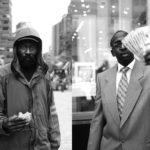

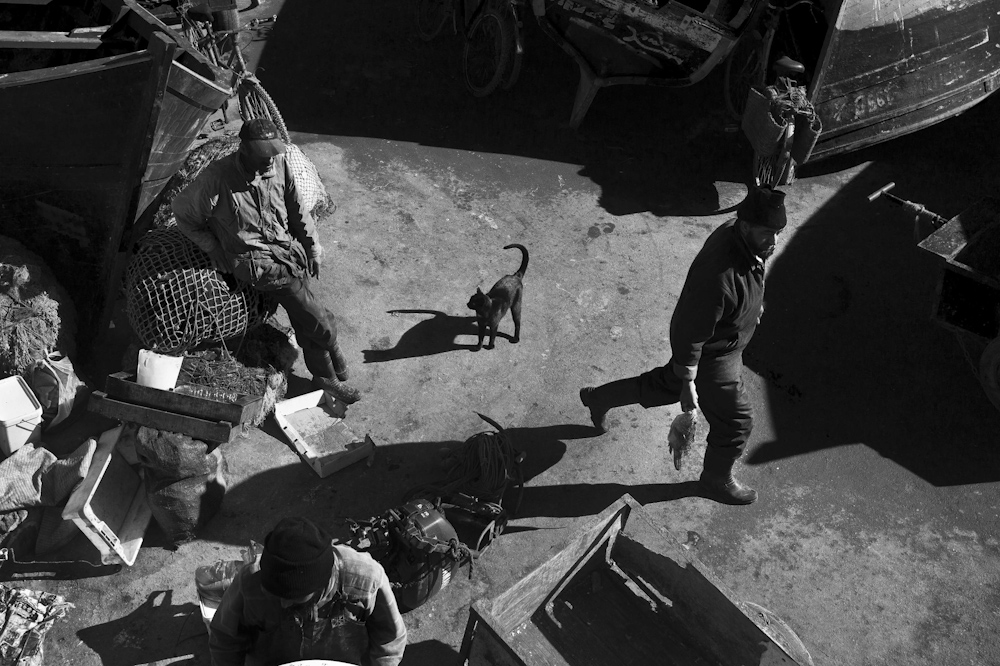
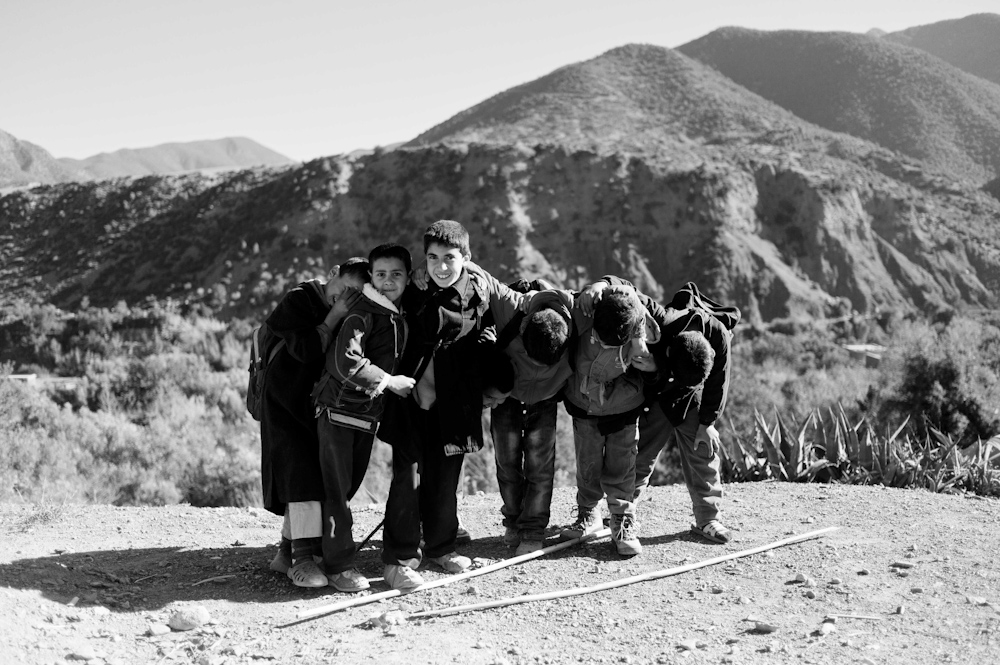
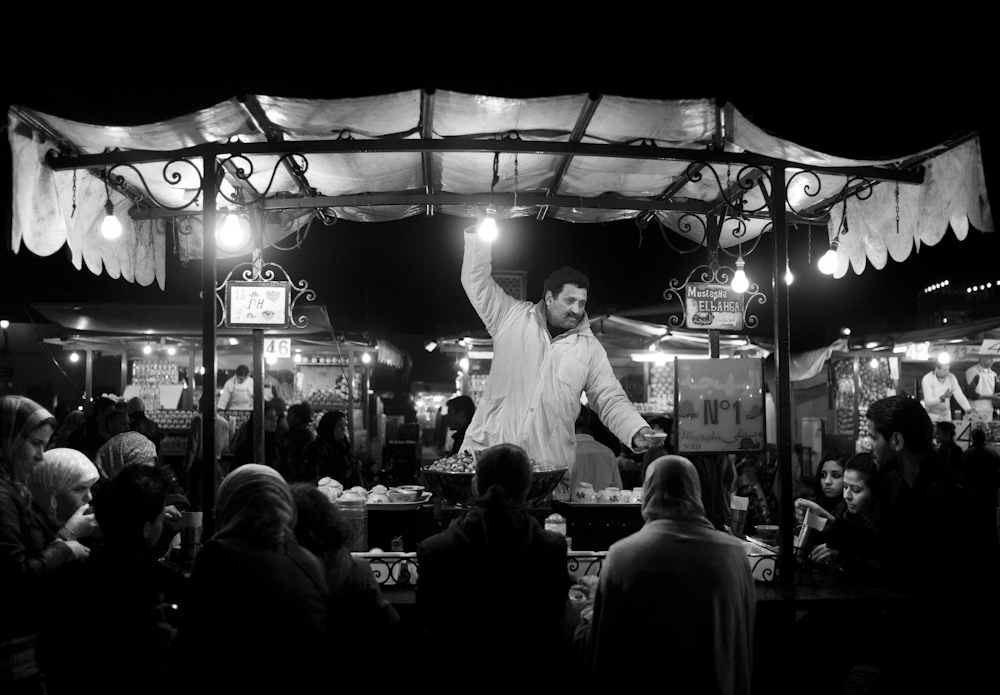
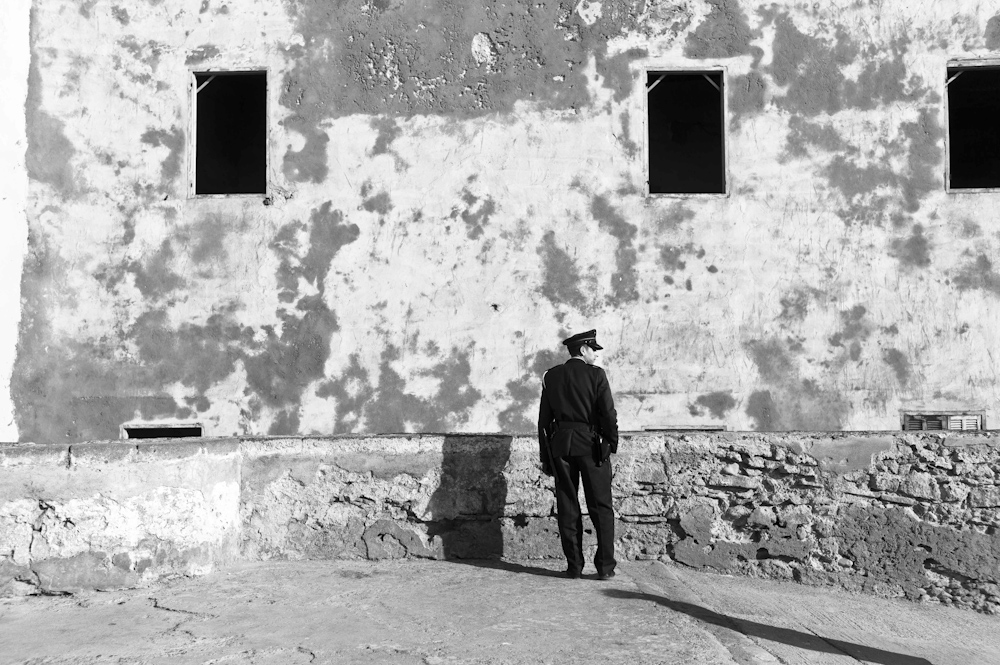
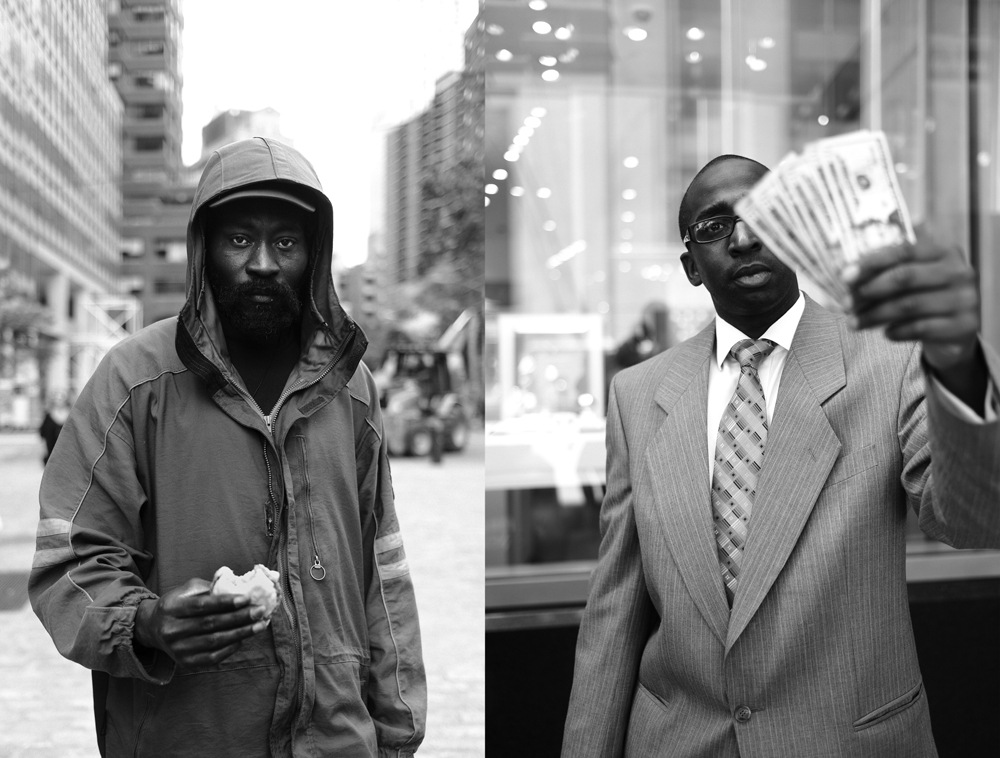
Comments (5)